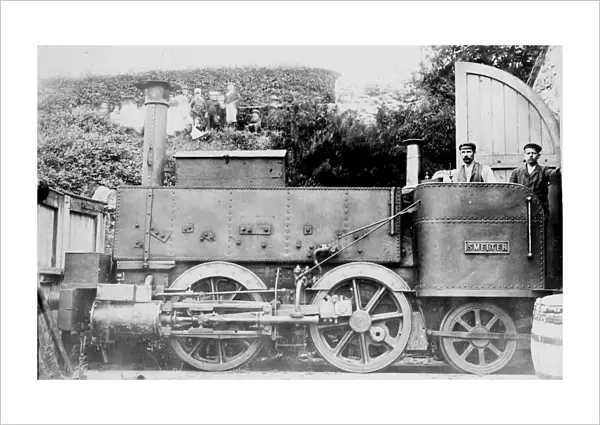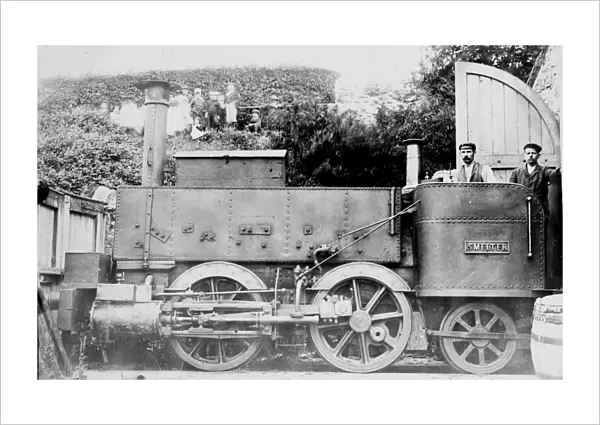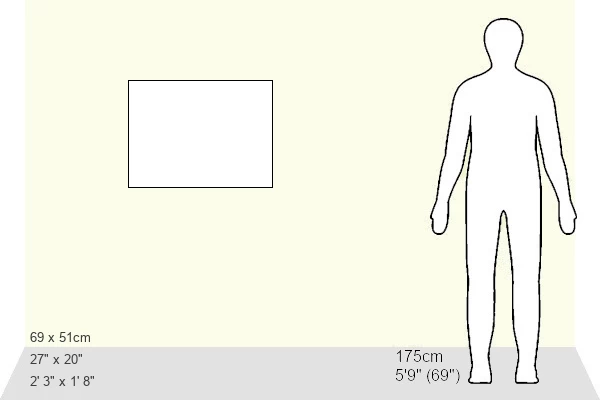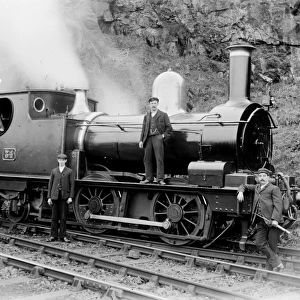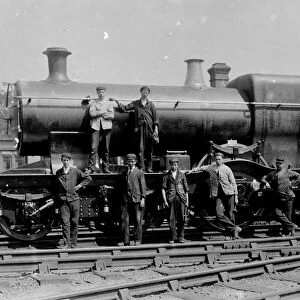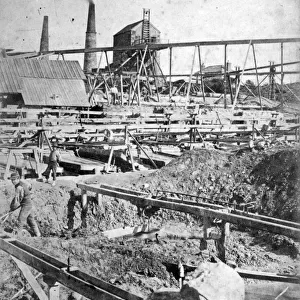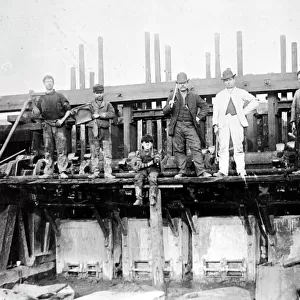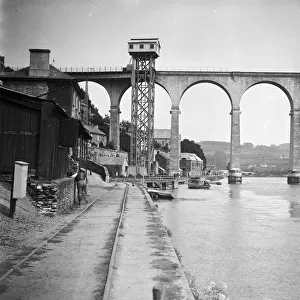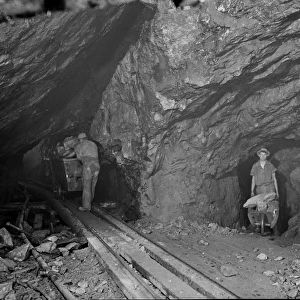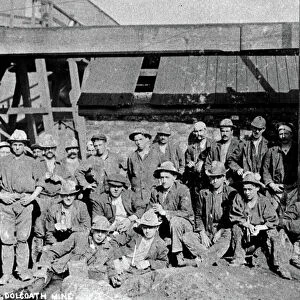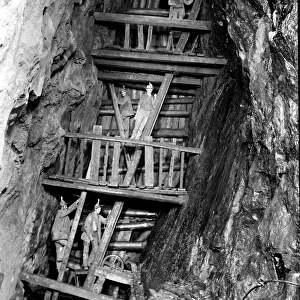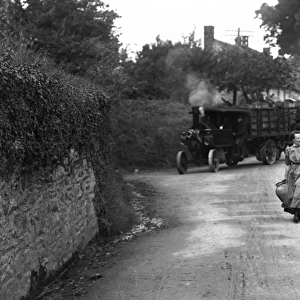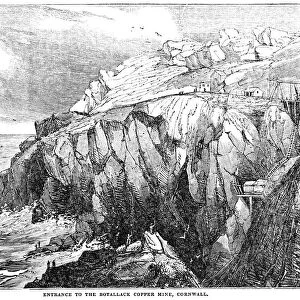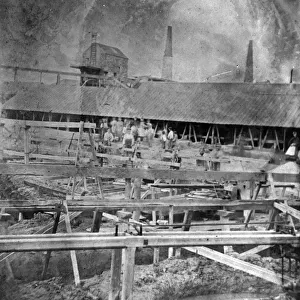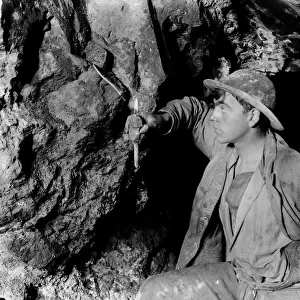Fine Art Print > Royal Cornwall Museum > Transport > Railways
Fine Art Print : Locomotive Smelter on the Redruth and Chacewater line, Cornwall. After 1854
![]()

Fine Art Prints from Royal Cornwall Museum
Locomotive Smelter on the Redruth and Chacewater line, Cornwall. After 1854
Driver and fireman posing for the camera and a group of small children looking on from the vantage point of a high hedge in the background. Authorised by an Act of Parliament in 1824, the Redruth and Chacewater Railway opened on January 30th 1826, running from the Gwennap copper mines to the south coast port of Devoran, with a branch line to service the mines of Redruth. The 4ft gauge line carried minerals and goods only and generally worked profitably. It was worked by horses until 1854 when two tank locomotives, Miner and Smelter, were bought - the first steam locomotives in Cornwall. Eventually during the 1860s the two competing lines were joined to form a coast to coast railway line. The line closed in 1915. Photographer: Unknown
Royal Cornwall Museum is the UK's Greatest Museum For Cornish Life & Culture
TRURI : RYrch.1
Media ID 12387165
© From the collection of the RIC
21"x14" (+3" Border) Fine Art Print
Step back in time with our exquisite Fine Art Print from Media Storehouse's collection. This captivating image transports you to the heart of Cornwall's rich industrial history, featuring the iconic Locomotive Smelter on the Redruth and Chacewater line. Witness the moment of pause as the driver and fireman pose for the camera, while a curious group of children look on from a high hedge in the background. A stunning addition to any home or office, this print is a testament to the beauty and history of the past.
21x14 image printed on 27x20 Fine Art Rag Paper with 3" (76mm) white border. Our Fine Art Prints are printed on 300gsm 100% acid free, PH neutral paper with archival properties. This printing method is used by museums and art collections to exhibit photographs and art reproductions.
Our fine art prints are high-quality prints made using a paper called Photo Rag. This 100% cotton rag fibre paper is known for its exceptional image sharpness, rich colors, and high level of detail, making it a popular choice for professional photographers and artists. Photo rag paper is our clear recommendation for a fine art paper print. If you can afford to spend more on a higher quality paper, then Photo Rag is our clear recommendation for a fine art paper print.
Estimated Image Size (if not cropped) is 53.3cm x 34cm (21" x 13.4")
Estimated Product Size is 68.6cm x 50.8cm (27" x 20")
These are individually made so all sizes are approximate
Artwork printed orientated as per the preview above, with landscape (horizontal) orientation to match the source image.
FEATURES IN THESE COLLECTIONS
> Railways
Capturing the Industrial Revolution - A Glimpse into Cornwall's Railway History
EDITORS COMMENTS
. This print from the Royal Cornwall Museum takes us back in time to witness a pivotal moment in Cornwall's industrial history. The image showcases the Locomotive Smelter on the Redruth and Chacewater line, an engineering marvel authorized by an Act of Parliament in 1824. In this snapshot, we see a driver and fireman striking a proud pose for the camera, their faces etched with determination and pride. Behind them, perched atop a high hedge, a group of small children gazes curiously at this new technological wonder unfolding before their eyes. The Redruth and Chacewater Railway opened its tracks on January 30th, 1826, connecting the Gwennap copper mines to Devoran port along with servicing nearby mines in Redruth through its branch line. Initially relying on horse-drawn carriages to transport minerals and goods efficiently, it wasn't until 1854 that two tank locomotives named Miner and Smelter were introduced – marking Cornwall's first steam-powered engines. As years passed by, these competing railway lines merged during the 1860s to form a coast-to-coast transportation network that revolutionized trade within Cornwall. However, progress eventually took its toll as changing times led to the closure of this historic railway line in 1915. Through this remarkable photograph captured by an unknown photographer from Cornish heritage (not affiliated with any
MADE IN THE USA
Safe Shipping with 30 Day Money Back Guarantee
FREE PERSONALISATION*
We are proud to offer a range of customisation features including Personalised Captions, Color Filters and Picture Zoom Tools
FREE COLORIZATION SERVICE
You can choose advanced AI Colorization for this picture at no extra charge!
SECURE PAYMENTS
We happily accept a wide range of payment options so you can pay for the things you need in the way that is most convenient for you
* Options may vary by product and licensing agreement. Zoomed Pictures can be adjusted in the Cart.

